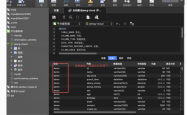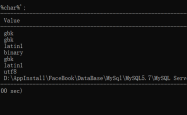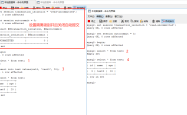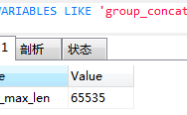MySQL读取JSON转换的方式
吾爱主题
阅读:252
2024-04-01 23:23:36
评论:0
存储
?| 1 2 3 4 5 6 7 | mysql5.7+开始支持存储JSON,后续不断优化,应用也越来越广泛 你可以自己将数据转换成Json String后插入,也可以选择使用工具, 而mybatis-plus就为此提供了非常简便的方式, 只需要在字段上加上 @TableField(typeHandler = XxxTypeHandler.class), mybatis-plus就会自动帮你做转换,通用一般就两个: - com.baomidou.mybatisplus.extension.handlers.JacksonTypeHandler - com.baomidou.mybatisplus.extension.handlers.FastjsonTypeHandler |
例如
?| 1 2 3 4 5 6 7 | @Data @TableName(autoResultMap = true ) public class Department implements Serializable { private static final long serialVersionUID = 203788572415896870L; @TableField(typeHandler = FastjsonTypeHandler.class) private List< Integer > userIds; } |
存在什么问题?
?| 1 2 3 4 5 6 7 8 9 | 如果使用通用处理器,那对于基础类型以及对象来说没有什么问题。 但如果存储的字段类型是对象集合,那么当你取出来时,会发现集合中的对象都是JSONObject类型。 最常见的情况就拿出来进行遍历操作时,会抛出强转异常: java.lang.ClassCastException: com.alibaba.fastjson.JSONObject cannot be cast to ... 因为处理器帮你转换时,并不会存储你集合的泛型,所以统统都按照Object类型来转换了: @Override protected Object parse(String json) { return JSON.parseObject(json, type); } |
例如下面这种形式的类:
?| 1 2 3 4 5 6 7 8 9 10 11 12 13 14 | @Data @TableName (autoResultMap = true ) public class Department implements Serializable { private static final long serialVersionUID = 203788572415896870L; @TableId (value = "id" , type = IdType.AUTO) private Integer id; @TableField (typeHandler = FastjsonTypeHandler. class ) private List<User> users; @Data public static class USer implements Serializable { // ... } } |
如何处理
方式一:自定义处理器,自己做类型转换,这也是当前最普遍的方式,但是对于存在List字段的对象,还需要在XxxMapper.xml中进行resultMap配置
?| 1 2 3 4 5 6 7 8 9 10 11 12 13 14 15 16 17 18 | @MappedTypes ({Object. class }) @MappedJdbcTypes (JdbcType.VARCHAR) public class ListFastJsonTypeHandler extends FastjsonTypeHandler { private final Class<? extends Object> type; public ListFastJsonTypeHandler(Class<?> type) { super (type); this .type = type; } /** * 自己将json转换成list * @param json * @return */ @Override protected Object parse(String json) { return JSON.parseArray(json, this .type); } |
| 1 2 3 4 5 6 7 8 | <mapper namespace= "com.xxx.cn.mapper.DepartmentMapper" > <resultMap id= "BaseResultMap" type= "com.xxx.cn.domain.Department" > <id property= "id" column= "id" /> <result property= "users" column= "users" jdbcType= "VARCHAR" javaType= "com.xxx.cn.domain.Department.User" typeHandler= "com.baomidou.mybatisplus.extension.handlers.FastjsonTypeHandler" /> </resultMap> </mapper> |
配置完成后,ListFastJsonTypeHandler就会将json转换成javaType对应的对象集合了
方式二:配置一个Mybatis插件,拦截ResultSetHandler,将返回结果进行处理。 这样的好处就是不用写自定义的处理器和在XxxMapper.xml中做配置,减少了工作
?| 1 2 3 4 5 6 7 8 9 10 11 12 13 14 15 16 17 18 19 20 21 22 23 24 25 26 27 28 29 30 31 32 33 34 35 36 37 38 39 40 41 42 43 44 45 46 47 48 49 50 51 52 53 54 55 56 57 58 59 60 61 62 63 64 65 66 67 68 69 70 71 72 73 74 75 76 77 78 79 80 81 | @Component @Intercepts ({ @Signature (type = ResultSetHandler. class , method = "handleResultSets" , args = {Statement. class }) }) public class ResultSetInterceptor implements Interceptor { /** * json序列化规则 */ private final SerializerFeature[] serializerFeatures = { SerializerFeature.WriteMapNullValue, SerializerFeature.WriteNullListAsEmpty, SerializerFeature.WriteNullStringAsEmpty }; @Override public Object intercept(Invocation invocation) throws Throwable { Object proceed = invocation.proceed(); if (containJSONObject(proceed)) { if (proceed instanceof Collection) { return JSON.parseArray(JSON.toJSONString(proceed, serializerFeatures), ((Collection<?>) proceed).toArray()[ 0 ].getClass()); } return JSON.parseObject(JSON.toJSONString(proceed, serializerFeatures), proceed.getClass()); } // if (proceed instanceof Collection) { // for (Object obj : ((Collection<?>) proceed)) { // parseJSON2Object(obj, obj.getClass()); // } // } else { // parseJSON2Object(proceed, proceed.getClass()); // } return proceed; } * 将返回数据中心的JSONObject对象转换成正常的对象 * * @param obj * @param typeClass * @throws IllegalAccessException * @throws ClassNotFoundException private void parseJSON2Object(Object obj, Class<?> typeClass) throws IllegalAccessException, ClassNotFoundException { for (Field declaredField : typeClass.getDeclaredFields()) { declaredField.setAccessible( true ); Object value = declaredField.get(obj); if (isNullValueField(value)) { continue ; Type genericType = declaredField.getGenericType(); String fieldClassName = genericType.getTypeName(); if (genericType instanceof ParameterizedType) { fieldClassName = ((ParameterizedType) genericType).getActualTypeArguments()[ 0 ].getTypeName(); if (containJSONObject(value)) { if (value instanceof Collection) { declaredField.set(obj, JSON.parseArray(JSON.toJSONString(value, serializerFeatures), Class.forName(fieldClassName))); } else { declaredField.set(obj, JSON.parseObject(JSON.toJSONString(value, serializerFeatures), Class.forName(fieldClassName))); } * 判断是否跳过字段 * @param value * @return private Boolean isNullValueField(Object value) { return null == value || "" .equals(String.valueOf(value).trim()) || (value instanceof Collection && ((Collection<?>) value).size() == 0 ); * 判断值是否包含JSONObject对象 private boolean containJSONObject(Object value) throws IllegalAccessException { if (isNullValueField(value)) { return false ; if (value instanceof Collection) { for (Object obj : (Collection<?>) value) { if (obj instanceof JSONObject) { return true ; if (obj instanceof Collection && containJSONObject(obj)) { for (Field declaredField : obj.getClass().getDeclaredFields()) { declaredField.setAccessible( true ); Object fieldValue = declaredField.get(obj); if (isNullValueField(fieldValue)) { continue ; } if (fieldValue instanceof JSONObject) { return true ; if (fieldValue instanceof Collection && containJSONObject(fieldValue)) { } return value instanceof JSONObject; } |
到此这篇关于MySQL读取JSON转换的文章就介绍到这了,更多相关MySQL读取JSON转换内容请搜索服务器之家以前的文章或继续浏览下面的相关文章希望大家以后多多支持服务器之家!
原文链接:https://blog.csdn.net/qq_37163392/article/details/123533825
声明
1.本站遵循行业规范,任何转载的稿件都会明确标注作者和来源;2.本站的原创文章,请转载时务必注明文章作者和来源,不尊重原创的行为我们将追究责任;3.作者投稿可能会经我们编辑修改或补充。











